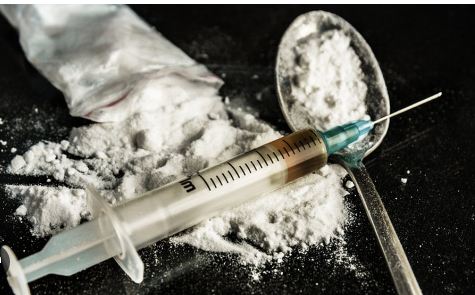Author: Sundas Mehreen
The author is a Research Associate and anti-drug activist dedicated to tackling substance abuse through research and advocacy for community impact.
Undoubtedly, youth is the decisive force behind a progressive and developed state. Though they were a minority, the youth remarkably revitalized the independence movement in 1947 and played a crucial role in defending the state during the 1965 war. This historical role underscores the untapped potential they offer today, as Pakistan’s youth bulge stands at a staggering 64% of the total population. This demographic shift presents a pivotal opportunity to reshape the future, but only if harnessed productively.
However, this opportunity comes with challenges. The current socio-economic landscape of Pakistan, marked by unemployment, lack of educational opportunities, and a rise in societal tensions, creates an environment where the youth, if left unsupported, can be easily drawn towards destructive behaviors. The internet and social media, while offering great opportunities for learning and connection, also expose the youth to dangerous influences, such as extremist ideologies, cybercrime, and drug peddling, which can flourish in online spaces. In this context, the exodus of talent through brain drain becomes a critical liability, particularly when adversaries seek to disincentivize, demoralize, corrupt, and even weaponize the youth, leading to behaviors that harm national stability. One of the most perilous threats among these is the proliferation of drugs.
In Pakistan, an estimated 7.8 million people (UN) take drugs regularly, and about 700 people die every day due to drug-related complications, translating to 250,000 deaths annually. The severity of the issue is magnified by the alarming statistics of drug-related arrests in 2024 alone, where 1,344 individuals were apprehended, including 105 females, 88 students, and 34 foreigners. This clearly shows that the drug menace is not only widespread but deeply embedded within our societal framework, particularly in educational institutions and family structures, which are supposed to cradle our future.
The education system, once seen as a protective environment for youth, is now becoming vulnerable to this menace. The explosive rise in synthetic drugs and the increasing involvement of females in drug trafficking clearly indicate that youth are the primary target, and this threat has been festering for a long time. Educational institutions are now grappling with the spread of narcotics on campuses, from universities to high schools, contributing to a vicious cycle of addiction that leads to deteriorating academic performance, behavioral problems, and, ultimately, the breakdown of family and community structures. Given the sheer magnitude of the problem, it is imperative to build a robust defense against the proliferation of narcotics. This can only be achieved through collective involvement, synergizing Law Enforcement Agencies with the youth, thereby creating the most effective defense mechanism to protect the very individuals who will shoulder the future of the nation.
A safe and healthy youth is directly proportional to a strong and stable state. Therefore, promoting healthy activities like sports, debates, and arts can play a crucial role in preventing youth from falling into the trap of addiction. While the Anti-Narcotics Force (ANF) has conducted 3,414 awareness sessions across Pakistan, involving the youth in the fight against drugs, there remains an urgent need to take this a step further. Drug awareness programs should be formally integrated into the school curriculum, and evidence-based initiatives should be launched within families, schools, and communities to spearhead a nationwide campaign. Such campaigns must focus on prevention, early intervention, and creating support systems that are easily accessible to all youth, regardless of socio-economic background.
Furthermore, efforts to reclaim those already ensnared by addiction are critical. The government must provide proper regulation, registration, and monitoring of private rehabilitation centers, which are currently operating with little oversight. Registering and regulating private rehabilitation centers, providing adequate support, and encouraging public-private partnerships in addiction recovery can offer pathways for these individuals to return as productive members of society.
To fully address this issue, we must also recognize the role of the family unit in preventing drug addiction. Parents need to be educated on how to detect early signs of drug use and how to support their children through difficult times. Awareness sessions that involve parents, guardians, and teachers could strengthen the social safety net around youth, making it harder for them to fall through the cracks and into addiction.
The consequences of ignoring this issue are too severe to overlook. With our youth bulge serving as the torchbearers of Pakistan’s future, it is crucial to intensify drug demand reduction campaigns, starting from the grassroots levels and pushing for pragmatic societal change. This change must come from both top-down and bottom-up approaches, where the government enforces strict anti-drug policies while communities take charge of spreading awareness and protecting their youth. Unfortunately, the gravity of the problem remains underappreciated, as addicts continue to be stigmatized as societal outcasts rather than individuals in need of support and rehabilitation.
If this stigma is not addressed, it will hinder efforts to reintegrate former addicts into society, leaving them vulnerable to relapse and perpetuating the cycle of drug abuse. But are we, as a society, truly listening?
The time to act is now. The window of opportunity is shrinking, and the future of Pakistan hinges on how we respond to this looming crisis. Will we rise to the challenge and protect our youth, or will we continue to turn a blind eye as this demographic treasure is turned into a liability?











